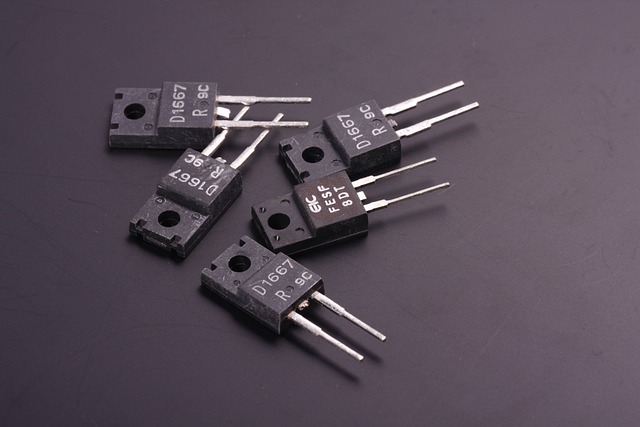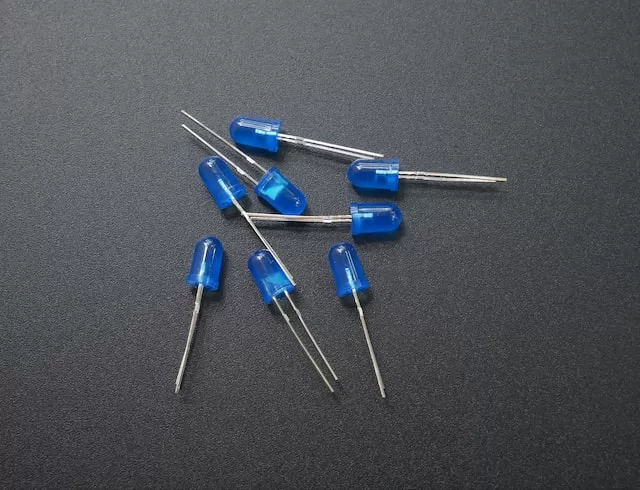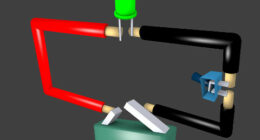A diode is used to allow current to flow in one direction only, a Zener diode allows some level of voltage control depending on the applied reverse bias. With the right application, both diodes can be beneficial for creating efficient circuitry designs.
Diodes
(Image by zhuangwei500 from Pixabay )

Diodes are semiconductor devices that allow current to flow in one direction only. This unidirectional flow of current is due to the P-N junction that exists within the diode. Diodes can be used for a variety of purposes, such as rectification, voltage regulation, signal modulation, and protection against electrical overstress.
Zener diodes
Zener diodes are a type of diode that is designed to operate in the reverse-biased mode. In this mode of operation, the Zener diode allows a small amount of current to flow in the reverse direction. This reversed current flows through the device’s depletion region, which causes the Zener diode’s voltage to drop to a very low value. The Zener diode is then said to be “clamped” at this low voltage level.
Zener diodes are used in voltage regulators because they can be precisely controlled to allow only a certain amount of current to flow. This makes them ideal for use in electronic devices that require a stable power supply.
Diode Vs. Zener Diode – The difference
The main difference between a diode and a Zener diode is that a Zener diode is designed to operate in the reverse-biased mode, while a diode is not. In the reverse-biased mode, the Zener diode can be used to regulate voltage. Standard diodes have a voltage drop of 0.7 volts, while Zener diodes have a voltage drop of 5 volts.
Uses for diodes
Diodes have a variety of uses, including rectification, voltage regulation, signal mixing, and detection.
Rectification is the process of converting alternating current (AC) to direct current (DC). Diodes are used in power supplies to convert AC to DC. The diode allows current to flow in only one direction and blocks any current that tries to flow in the reverse direction.
Voltage regulation is another common use for diodes. Zener diodes are often used for this purpose. When a Zener diode is connected in parallel with a resistor, it regulates the voltage across the resistor by breaking down at a predetermined voltage level. This prevents the voltage from exceeding the breakdown voltage of the diode.
Signal mixing is another common use for diodes. When two signals are applied to opposite sides of a diode, the resulting signal will be the sum of the two signals. This can be used to create more complex signals from simpler ones.
Detection is another common use for diodes. A diode can be used to detect changes in an electric field or changes in light intensity. When a change is detected, the diode will conduct current and produce an output signal.
Uses for Zener diodes
Zener diodes are used for voltage regulation, as reference elements, as surge suppressors, and in switching applications. In electronic circuits, Zener diodes are often used to provide a constant voltage reference source. When used in this manner, the diode is reverse-biased, meaning that the current flow is blocked until the Zener voltage is reached. Once the Zener voltage is reached, the diode conducts current in the reverse direction. The result is a constant voltage output from the diode, regardless of changes in input voltage or load resistance. Zener diodes can also be used to protect electronic circuits from transient voltages by clamping the voltage to a safe level. This type of Zener diode circuit is known as a voltage-regulator circuit.
How to test a diode?
To test a diode, you will need a digital multimeter (DMM) set to the ohmmeter function. With the diode connected in the circuit, measure the resistance between the anode and cathode. The meter should show a low resistance when measuring in one direction and a high resistance when measuring in the other direction. If the meter shows no change in resistance or if the resistance is very high, then the diode is likely defective.
What is the voltage of the Zener diode?
The voltage of a Zener diode can be determined by its Zener voltage, which is the value of the voltage drop across the diode when it is operated in the reverse-biased mode. The Zener voltage is a function of the doping concentration of the semiconductor material and the junction temperature.
Can the Zener diode be used as a rectifier?
A Zener diode can be used as a rectifier because it can reverse the current flow. However, it is not as efficient as a regular diode and will only work if the voltage is below the Zener voltage.
What is the difference between a diode and a transistor?
Diodes are made of a material with two different regions, called p-type and n-type. Transistors are made of three different regions, called p-type, n-type, and neutral. The difference between a diode and a transistor is that a transistor can control the flow of current through it, while a diode can only allow or block the flow of current.
What is the difference between a diode and a resistor?
Diodes and resistors are two basic electronic components. Diodes allow current to flow in one direction only, while resistors restrict the flow of current. The main difference between a diode and a resistor is its function. Diodes are used to rectify AC into DC, while resistors are used to limit the amount of current in a circuit.
What are the 5 general types of diodes?
1. P-N junction diodes
2. Rectifier diodes
3. Zener diodes
4. LEDs
5. Photodiodes
Featured Image by – Vishnu Mohanan on Unsplash








